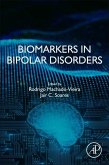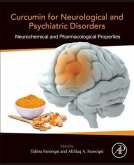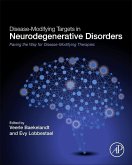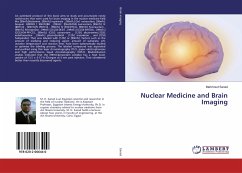Chemical and Biochemical Approaches for the Study of Anesthetic Function, Part A
Herausgegeben:Eckenhoff, Roderic; Dmochowski, Ivan
Schade – dieser Artikel ist leider ausverkauft. Sobald wir wissen, ob und wann der Artikel wieder verfügbar ist, informieren wir Sie an dieser Stelle.
Chemical and Biochemical Approaches for the Study of Anesthetic Function, Part A
Herausgegeben:Eckenhoff, Roderic; Dmochowski, Ivan
- Gebundenes Buch
- Merkliste
- Auf die Merkliste
- Bewerten Bewerten
- Teilen
- Produkt teilen
- Produkterinnerung
- Produkterinnerung
Chemical and Biochemical Approaches for the Study of Anesthetic Function, Part A, Volume 602 assembles new information on our understanding of anesthesia. This latest release in the series includes sections on how physical accuracy leads to biological relevance, best practices for simulating ligand-gated ion channels interacting with general anesthetics, computational approaches for studying voltage-gated ion channels modulation by general anesthetics, anesthetic parameterization, pharmacophore QSAR, QM, ONIOM, and kinetic modeling of electrophysiology data.
Andere Kunden interessierten sich auch für
![Biomarkers in Bipolar Disorders Biomarkers in Bipolar Disorders]() Biomarkers in Bipolar Disorders152,99 €
Biomarkers in Bipolar Disorders152,99 €![Trigeminocardiac Reflex Trigeminocardiac Reflex]() Trigeminocardiac Reflex202,99 €
Trigeminocardiac Reflex202,99 €![Curcumin for Neurological and Psychiatric Disorders Curcumin for Neurological and Psychiatric Disorders]() Curcumin for Neurological and Psychiatric Disorders152,99 €
Curcumin for Neurological and Psychiatric Disorders152,99 €![Ascaris Ascaris]() Ascaris152,99 €
Ascaris152,99 €![Disease-Modifying Targets in Neurodegenerative Disorders Disease-Modifying Targets in Neurodegenerative Disorders]() Disease-Modifying Targets in Neurodegenerative Disorders79,99 €
Disease-Modifying Targets in Neurodegenerative Disorders79,99 €![Nuclear Medicine and Brain Imaging Nuclear Medicine and Brain Imaging]() Mahmoud SanadNuclear Medicine and Brain Imaging42,99 €
Mahmoud SanadNuclear Medicine and Brain Imaging42,99 €![Computational Bioengineering and Bioinformatics Computational Bioengineering and Bioinformatics]() Computational Bioengineering and Bioinformatics161,99 €
Computational Bioengineering and Bioinformatics161,99 €-
-
Chemical and Biochemical Approaches for the Study of Anesthetic Function, Part A, Volume 602 assembles new information on our understanding of anesthesia. This latest release in the series includes sections on how physical accuracy leads to biological relevance, best practices for simulating ligand-gated ion channels interacting with general anesthetics, computational approaches for studying voltage-gated ion channels modulation by general anesthetics, anesthetic parameterization, pharmacophore QSAR, QM, ONIOM, and kinetic modeling of electrophysiology data.
Produktdetails
- Produktdetails
- Methods in Enzymology Volume 602
- Verlag: Academic Press / Elsevier Science & Technology
- Artikelnr. des Verlages: S0076-6879(18)X0004-4
- Englisch
- Abmessung: 23mm x 152mm x 229mm
- Gewicht: 796g
- ISBN-13: 9780128127407
- Artikelnr.: 50199011
- Methods in Enzymology Volume 602
- Verlag: Academic Press / Elsevier Science & Technology
- Artikelnr. des Verlages: S0076-6879(18)X0004-4
- Englisch
- Abmessung: 23mm x 152mm x 229mm
- Gewicht: 796g
- ISBN-13: 9780128127407
- Artikelnr.: 50199011
Originally aspiring to be a marine biologist while at the University of Miami, Rod elected instead to join the ranks in hyperbaric medicine after graduating from Northwestern University Medical School. Since the only formal training program existed in the military, he became a US Naval officer, ultimately spending most of his time performing hyperbaric medicine research at the Naval Submarine Medical Research Laboratory in Groton, CT. Aiming to continue in this area, but in a more academic setting, he returned to civilian life as an anesthesia resident at the University of Pennsylvania, in large part because of the renowned Institute for Environmental Medicine at Penn. But the ability to more definitively answer questions persuaded Dr. Eckenhoff to pursue basic science training in the Andrew Somlyo lab at Penn., where he accidently discovered an approach to measure subcellular concentrations of anesthetics. This launched him in an entirely new direction, ultimately discovering a
nesthetic photolabeling, and adapting a series of traditionally biophysical approaches to the study of anesthetic mechanisms. Receiving his first NIH grant in 1991, Dr. Eckenhoff assembled an interdisciplinary group to study anesthetic mechanisms, and just a few years later, led a program project grant to funding on the first attempt. This grant is now in its 18th year and has evolved to now include seven different institutions across the country. The study of anesthetic mechanisms opened new doors into adverse effects, such as possible interactions with Alzheimer neuropathology, an issue that has gained considerable traction over the past decade. Finally, Dr. Eckenhoff has had the privilege of mentoring dozens of outstanding physicians, physician/scientists and basic scientists over the last thirty years.
nesthetic photolabeling, and adapting a series of traditionally biophysical approaches to the study of anesthetic mechanisms. Receiving his first NIH grant in 1991, Dr. Eckenhoff assembled an interdisciplinary group to study anesthetic mechanisms, and just a few years later, led a program project grant to funding on the first attempt. This grant is now in its 18th year and has evolved to now include seven different institutions across the country. The study of anesthetic mechanisms opened new doors into adverse effects, such as possible interactions with Alzheimer neuropathology, an issue that has gained considerable traction over the past decade. Finally, Dr. Eckenhoff has had the privilege of mentoring dozens of outstanding physicians, physician/scientists and basic scientists over the last thirty years.
Computational approaches 1. Physical accuracy leads to biological relevance: Best practices for simulating ligand-gated ion channels interacting with general anesthetics Grace Brannigan and Sruthi Murlidaran 2. Computational approaches for studying voltage-gated ion channels modulation by general anesthetics Vincenzo Carnevale 3. Anesthetic parameterization Jerome Henin 4. Pharmacophore QSAR, QM, ONIOM Edward Bertaccini 5. Kinetic modeling of electrophysiology data Robert Cantor
Genetics and model organisms 6. General genetic strategies Philip G. Morgan 7. Worms Margaret Sedensky 8. Flies Bruno van Swinderen 9. Tadpoles Kellie Ann Woll 10. Zebrafish Victoria Bedell and Julia Dallman 11. Mice Max Kelz
Photolabeling 12. Mass spect ID of adducts Kellie Ann Woll 13. Photolabeling protection/competition Jonathan Cohen
Xenon 14. Xenon-protein interactions Benjamin Roose and Ivan Dmochowski 15. Xenon gas delivery/recovery procedures Mervyn Maze 16. Hyperpolarized Xe-129 MRI Mitchell Albert 17. CT imaging Andrew McKinstry-Wu
Electrophysiology 18. Native system electrophysiology (slices, cells, in vivo) Boris Heifets 19. Voltage-gated ion channels (Kv, Nav) Manuel Covarrubias and Elaine Yang 20. Ligand-gated ion channels Stuart A. Forman
Genetics and model organisms 6. General genetic strategies Philip G. Morgan 7. Worms Margaret Sedensky 8. Flies Bruno van Swinderen 9. Tadpoles Kellie Ann Woll 10. Zebrafish Victoria Bedell and Julia Dallman 11. Mice Max Kelz
Photolabeling 12. Mass spect ID of adducts Kellie Ann Woll 13. Photolabeling protection/competition Jonathan Cohen
Xenon 14. Xenon-protein interactions Benjamin Roose and Ivan Dmochowski 15. Xenon gas delivery/recovery procedures Mervyn Maze 16. Hyperpolarized Xe-129 MRI Mitchell Albert 17. CT imaging Andrew McKinstry-Wu
Electrophysiology 18. Native system electrophysiology (slices, cells, in vivo) Boris Heifets 19. Voltage-gated ion channels (Kv, Nav) Manuel Covarrubias and Elaine Yang 20. Ligand-gated ion channels Stuart A. Forman
Computational approaches 1. Physical accuracy leads to biological relevance: Best practices for simulating ligand-gated ion channels interacting with general anesthetics Grace Brannigan and Sruthi Murlidaran 2. Computational approaches for studying voltage-gated ion channels modulation by general anesthetics Vincenzo Carnevale 3. Anesthetic parameterization Jerome Henin 4. Pharmacophore QSAR, QM, ONIOM Edward Bertaccini 5. Kinetic modeling of electrophysiology data Robert Cantor
Genetics and model organisms 6. General genetic strategies Philip G. Morgan 7. Worms Margaret Sedensky 8. Flies Bruno van Swinderen 9. Tadpoles Kellie Ann Woll 10. Zebrafish Victoria Bedell and Julia Dallman 11. Mice Max Kelz
Photolabeling 12. Mass spect ID of adducts Kellie Ann Woll 13. Photolabeling protection/competition Jonathan Cohen
Xenon 14. Xenon-protein interactions Benjamin Roose and Ivan Dmochowski 15. Xenon gas delivery/recovery procedures Mervyn Maze 16. Hyperpolarized Xe-129 MRI Mitchell Albert 17. CT imaging Andrew McKinstry-Wu
Electrophysiology 18. Native system electrophysiology (slices, cells, in vivo) Boris Heifets 19. Voltage-gated ion channels (Kv, Nav) Manuel Covarrubias and Elaine Yang 20. Ligand-gated ion channels Stuart A. Forman
Genetics and model organisms 6. General genetic strategies Philip G. Morgan 7. Worms Margaret Sedensky 8. Flies Bruno van Swinderen 9. Tadpoles Kellie Ann Woll 10. Zebrafish Victoria Bedell and Julia Dallman 11. Mice Max Kelz
Photolabeling 12. Mass spect ID of adducts Kellie Ann Woll 13. Photolabeling protection/competition Jonathan Cohen
Xenon 14. Xenon-protein interactions Benjamin Roose and Ivan Dmochowski 15. Xenon gas delivery/recovery procedures Mervyn Maze 16. Hyperpolarized Xe-129 MRI Mitchell Albert 17. CT imaging Andrew McKinstry-Wu
Electrophysiology 18. Native system electrophysiology (slices, cells, in vivo) Boris Heifets 19. Voltage-gated ion channels (Kv, Nav) Manuel Covarrubias and Elaine Yang 20. Ligand-gated ion channels Stuart A. Forman







